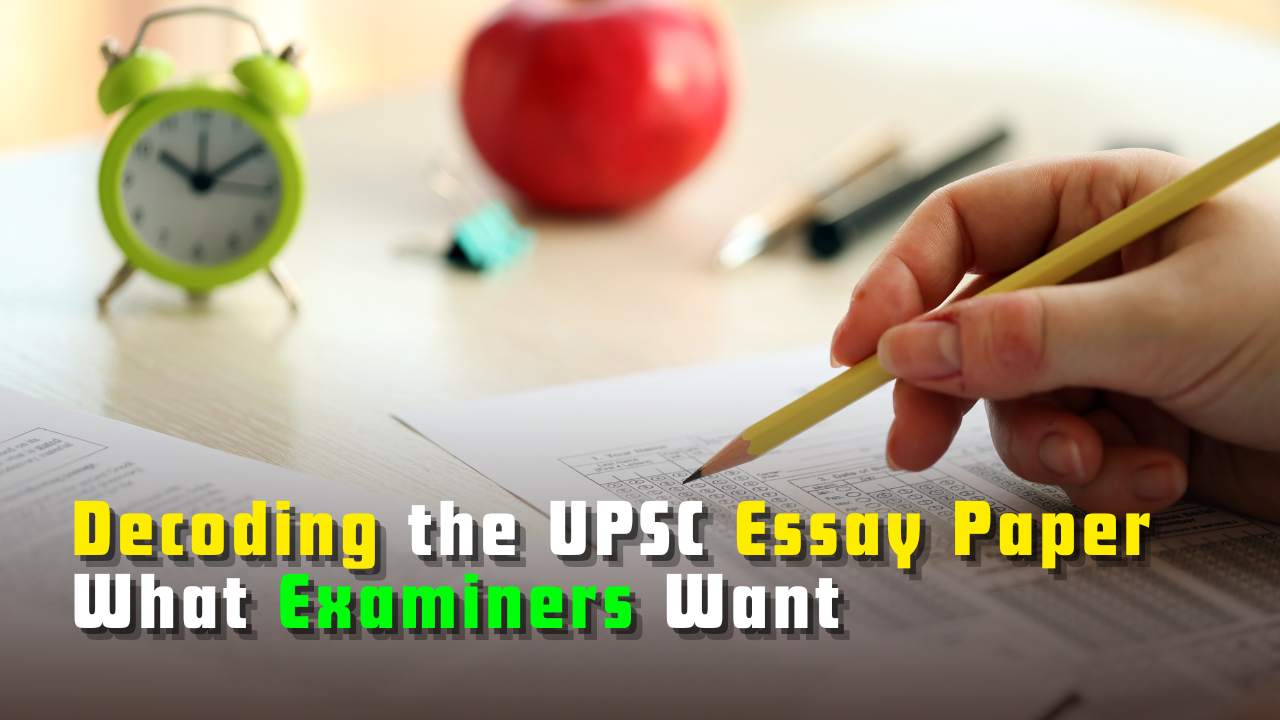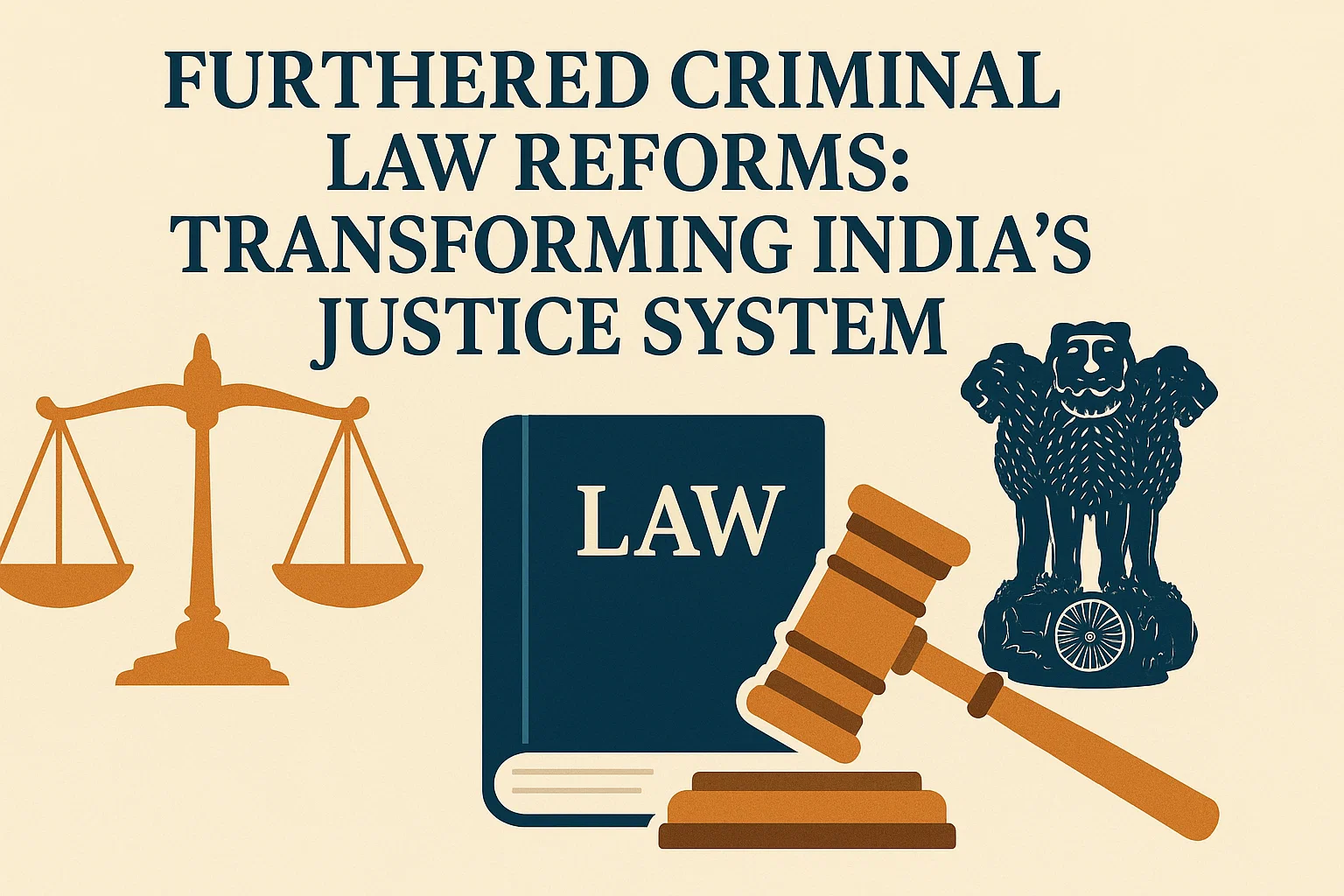Decoding the UPSC Essay Paper : What Examiners Want
UPSC Essay Paper 2025 is near. Learn examiner expectations, structure, examples, and tips to write a balanced, high-scoring essay.

Introduction: UPSC Essay Paper
UPSC Mains 2025 Paper I (Essay) is around the corner, and aspirants are gearing up for one of the most decisive parts of the examination. The essay paper is not about endurance or literary flair; it tests your ability to think critically, organise arguments, and communicate with clarity—qualities expected of a future civil servant. Understanding what examiners look for can turn this unpredictable paper into a scoring opportunity.
The UPSC essay paper is not a test of endurance, nor is it a creativity contest. It is an evaluation of your ability to think, organise, and communicate as someone who might one day hold public office. The challenge is that you are working in an environment with no fixed subject list, no reference materials, and just a few hours to produce something worth reading. The advantage—if you understand what the examiner wants—is that you can turn this unpredictability into an opportunity.
The Examiner’s Lens
Every examiner comes to your script with a checklist, whether conscious or not. They are looking at whether you have understood the topic precisely, organised your thoughts in a logical sequence, and expressed them clearly. But beyond these surface checks, they are asking deeper questions:
- Does this candidate understand complexity?
- Can they connect seemingly unrelated ideas into a coherent whole?
- Do they remain balanced even when discussing emotional or controversial themes?
- Does this feel like it was written by someone capable of making fair, informed decisions in public life?
This last point is crucial: the essay is not only a writing test—it is a personality test in disguise. It tells the examiner as much about your temperament as it does about your intellect.
Why Structure Matters More Than Style
Contrary to popular belief, ornate language is not what makes examiners sit up; structure does. They must read dozens of essays in one sitting, and a well-structured script is both easier to read and more convincing. The Four-Part Introduction method—Hook, Bridge, Explanation, Thesis—offers a predictable yet flexible way to open your essay with impact. A gripping start is valuable, but what matters is that it leads seamlessly into a clear statement of purpose.
The body then becomes the test of your organisational skills. Using a PEEL framework (Point, Explanation, Example, Link) for each paragraph ensures that your arguments are not just listed but developed. This keeps your essay from becoming a string of disconnected statements.
Smooth transitions are non-negotiable. A sentence that bridges one paragraph to the next shows the examiner you are thinking ahead, not just reacting point by point. Phrases like “This challenge becomes even more complex when…,” or “A similar tension appears in…” act as signposts, making the reading experience fluid rather than fragmented.
Interdisciplinary Thinking: A Mark of Maturity
If there is one quality that instantly elevates an essay, it is the ability to weave insights from different domains. In the UPSC context, this is not the same as simply covering many dimensions; it is about integration.
An examiner can tell the difference between an essay that lists “political, economic, social” points and one that connects them meaningfully. The latter might trace how a political policy impacts the economy, how that economic shift affects society, and how societal change in turn shapes political will. This chain-thinking is what shows maturity.
An essay on “Opinion is the medium between knowledge and ignorance” works best as a case study when it moves beyond abstract philosophy, weaving in politics (public opinion in democracy), media (fake news and echo chambers), education (questioning to build knowledge), sociology (groupthink), law (balancing evidence and empathy), and technology (AI bias). Each field adds depth, but the real strength lies in smooth transitions that turn them into one coherent conversation.
Depth Over Decoration
Many candidates fall into the trap of using high-sounding quotes or rare vocabulary to impress. What examiners actually reward is depth—showing that you can interrogate an idea, look for its causes, examine its consequences, and test it against counter-arguments.
Depth means asking “why” and “how,” not just “what.” If you write about public opinion in democracy, don’t stop at saying it is powerful—explain why it can be both the guardian of freedom and the enabler of misinformation. Show this with evidence, then link it to the broader theme. This is the difference between narration and analysis, and the UPSC values the latter far more.
The Role of Examples
An examiner reading your essay is not expecting a research paper. They want relevant, well-placed examples that illuminate your point. The key is to be selective: one sharp, contextually relevant example can be more persuasive than five generic ones.
The best examples often have a twist—they are not the overused clichés that the examiner has already seen in dozens of scripts. Drawing from lesser-known but impactful events, recent developments, or cross-cultural comparisons can make your essay stand out. The example of AI recruitment tools reflecting bias, for instance, is modern, relevant, and linked to governance ethics.
Examiner Psychology: Small Things That Matter
There are also subtle factors that influence scoring. Neat handwriting and visible paragraph breaks are obvious, but presentation is more than that. Subtle underlining of keywords can help the examiner see your structure without you breaking the flow into bullet points. Clear headings can work in thematic essays, but in philosophical topics, they can sometimes break the reflective tone—choose wisely based on the topic.
Examiners also value originality, but it must be within the bounds of relevance. A surprising analogy that fits the theme can make the essay memorable, but straying into irrelevance risks being penalised.
The Balancing Act
One of the quickest ways to lose marks is to appear biased or extreme. The examiner is looking for someone who can see more than one side of an issue. This does not mean sitting on the fence—you must still take a stand—but your position should emerge from a fair consideration of opposing views.
Balance also means proportionality. If you are discussing a topic like “The ethics of artificial intelligence,” it is fine to be concerned about risks, but a lopsided essay that ignores potential benefits will seem incomplete.
The Power of the Conclusion
The conclusion is your last chance to leave an impression: it should restate your thesis in fresh words, recall your main arguments without turning into a list, and end with a reflection or call to action.
The best conclusions feel like a natural resolution of the journey you took the reader on. They do not suddenly introduce new arguments, nor do they collapse into vague platitudes. A memorable closing line—something that feels both wise and forward-looking—can help your essay linger in the examiner’s mind.
Final Thought
When you strip away the myths, the UPSC essay paper is not about showing off how much you know, but about demonstrating how you think critically. If you can capture complexity without confusion, move confidently between disciplines, and write with clarity and fairness, you are giving the examiner exactly what they hope to find.
The essay paper is less a battlefield for flashy language and more a stage for structured, mature reasoning. Approach it as a conversation with someone you respect, not a speech to be applauded. In that conversation, every word, example, and transition is an opportunity to prove that you belong in the service of the public.
Subscribe to our Youtube Channel for more Valuable Content – TheStudyias
Download the App to Subscribe to our Courses – Thestudyias
The Source’s Authority and Ownership of the Article is Claimed By THE STUDY IAS BY MANIKANT SINGH




